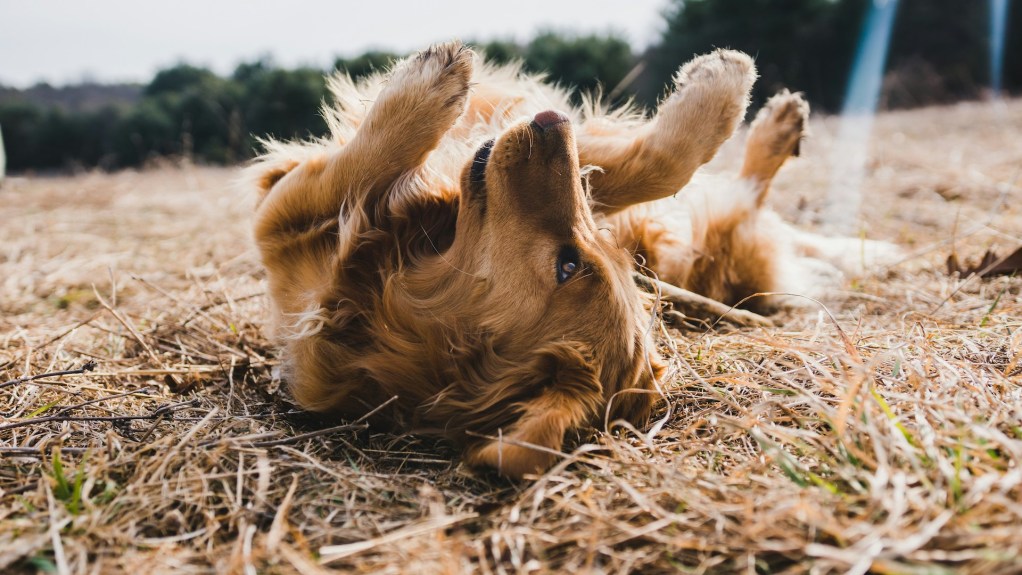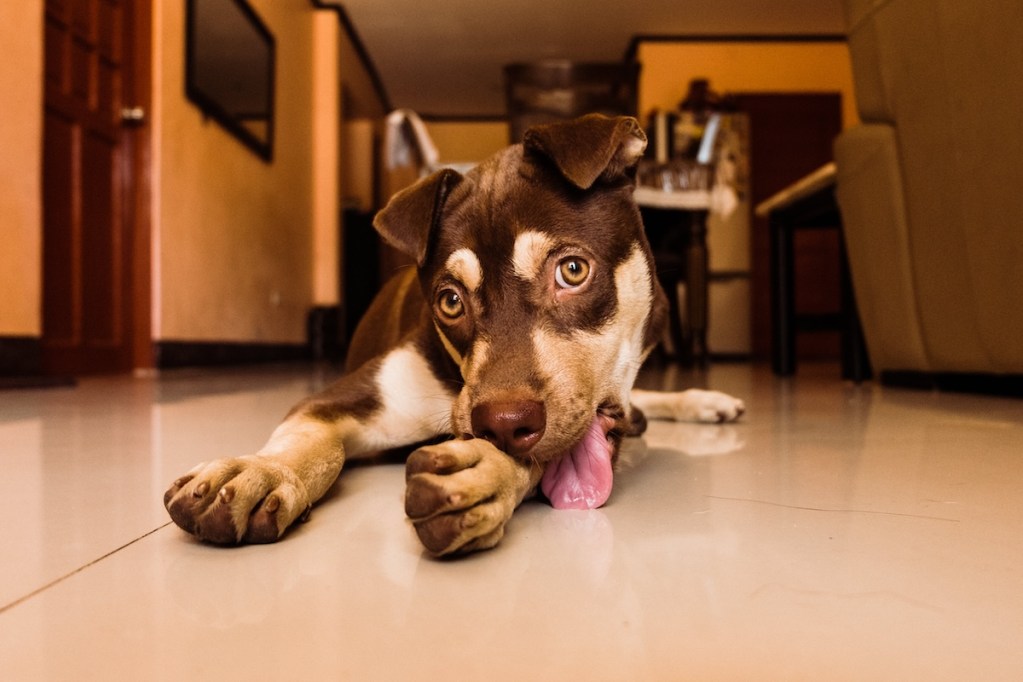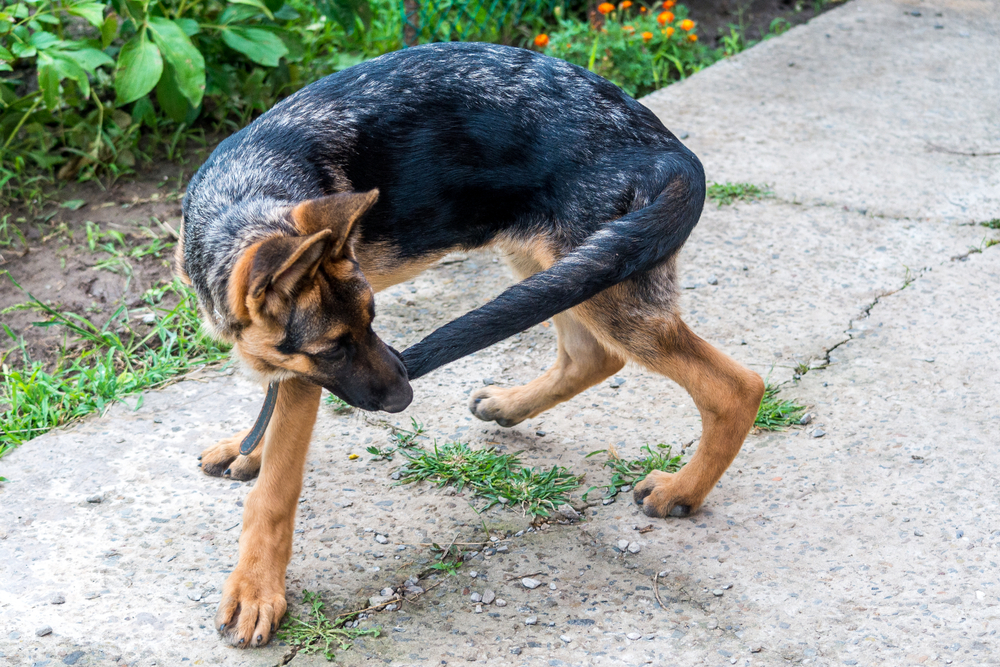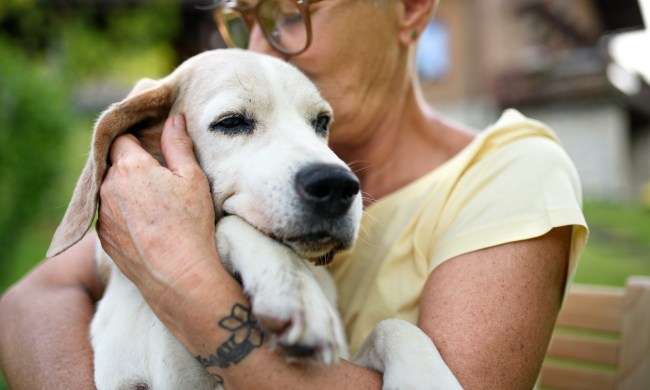Having a dog is mostly fun and games, but there are some parts of pet parenthood that are downright gross. Some of those details become everyday occurrences, such as picking up after your dog does their business, but others will always make pup parents squirm in their seats. Unfortunately, worms fall into that category.
Even though many dogs and owners will have to deal with a case of ringworm, roundworm, or even heartworm at some point in their lives, it’s understandable why the thought of worms gives people the heebie-jeebies. Take a deep breath, however, because ringworm infections aren’t actually worms — but they are important to know about. Even a little knowledge could help you reduce your dog’s risk of contracting this infection.
In this article, we’ll cover everything you need to know about ringworm in dogs: what it looks like, when to visit a vet, and how to treat or prevent this problem from happening to your dog. The good news is that you don’t have to be powerless when it comes to ringworm.
What is ringworm?

Although the disease’s name is misleading, ringworm is not actually caused by worms. It’s not always shaped like a ring, either. This fungal infection can manifest on the hair, skin, and nails of many animal species (including humans), and it most often takes the form of a red, raised — even ring-shaped — inflammatory lesion.
How is ringworm transmitted?
As the Veterinary Centers of America explains, the accurate medical name for ringworm is dermatophytosis, after the species of fungi that cause the infection. However, it’s worth noting that there are multiple species of dermatophytes. Some of these infect only one species of host, while others can infect any species and pass between species as well.
Direct transmission happens when a human or animal makes contact with the fungus. This can happen by touching an infected person or pet, or it can develop after touching a surface the fungi inhabited. However, people and pets come into contact with this fungus frequently without being infected, which proves that many external factors, including a host’s immune system and the amount of fungi on a surface, affect whether someone develops an infection or not. Even so, ringworm infections are considered contagious and can be passed from one animal to another without either of them experiencing symptoms.
Signs and symptoms of ringworm in dogs

If your dog contracts a ringworm infection, they may have no symptoms at all. However, most dogs experience minor to moderate symptoms, including:
- Alopecia, or bald spots, usually in a circular shape
- Skin lesions with a red, crusty edge
- Poor coat health or dry, brittle hair
- Dandruff
- Itchiness, excessive grooming, signs of scratching
- Darkened or inflamed patches of skin
- Dry, scaly skin
- Inflamed nail beds
- Darker, dry, brittle, discolored, or misshapen nails
While nail infections tend to be less common, they can also be harder to notice, especially if your dog has hairy paws. So, if you notice your dog licking their paws more than normal, it’s usually worth taking a closer look.
How to treat and prevent ringworm in dogs

If your dog has symptoms of ringworm, you’ll need to visit the veterinarian for diagnosis and treatment. Your dog’s vet may be able to use a special UV light to look for areas of skin lesions, but many times, a small skin sample may be needed to test for the fungus. If this sample tests positive for ringworm, your dog can receive the proper medication(s) and/or treatments to relieve their symptoms and remove the fungus.
Most often, a veterinarian will prescribe a topical antifungal ointment for dog owners to apply to their pet’s infected areas. Your dog may also need oral medication in addition, so be sure to have clear instructions for all of your dog’s medications before leaving the vet’s office. Every case could be treated slightly differently, so please don’t deviate from your veterinarian’s instructions.
Another factor to consider is environmental contamination. You’ll want to vacuum and clean as much of your home (or at least where your dog hangs out) as possible, as well as wash your dog’s bed, blankets, and toys. If you have additional pets that had a negative ringworm test, they’ll need to be kept apart until your infected pet tests negative at the vet’s office (your vet may recommend waiting for two negative tests). According to the VCA, this waiting period takes about three weeks on average.
Remember, ringworm is easy to transmit to people, so please wash your hands, wear gloves, and limit contact with infected animals during this period, if you can.
How to prevent ringworm
While there’s no preventative medication for your dog to take to avoid getting ringworm, like there is for canine heartworm, you can still take a few precautions to keep everyone in your home safe. Wash blankets, dog beds, and dog accessories on a regular basis, especially after traveling somewhere new. Be sure to keep any new pets separated from existing pets until you’re sure they’re healthy, though many rescues and shelters will have already done this.
Most importantly, stay on top of your dogs’ vet care. Annual physicals are great opportunities to make sure your dog is in good health. Not only can your vet check for any skin or nail abnormalities, but they can inform you if your dog’s immune system isn’t great, which could put them at risk for ringworm.
While the thought of a ringworm infection may still make you feel grossed out, we hope it gives you peace of mind to know that it’s both preventable and treatable. The best thing you can do to prevent your dogs from getting infected is to stay mindful in your day-to-day lives. You’ve got this!




